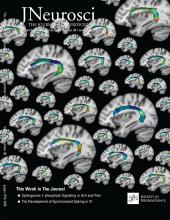Language exposure relates to structural neural connectivity in childhood

Neuroscience research has elucidated broad relationships between socioeconomic status (SES) and young children's brain structure, but there is little mechanistic knowledge about specific environmental factors that are associated with specific variation in brain structure. One environmental factor, early language exposure, predicts children's linguistic and cognitive skills and later academic achievement, but how language exposure relates to neuroanatomy is unknown. By measuring the real-world language exposure of young children (ages 4–6 years, 27 male/13 female), we confirmed the preregistered hypothesis that greater adult-child conversational experience, independent of SES and the sheer amount of adult speech, is related to stronger, more coherent white matter connectivity in the left arcuate and superior longitudinal fasciculi on average, and specifically near their anterior termination at Broca's area in left inferior frontal cortex. Fractional anisotropy of significant tract subregions mediated the relationship between conversational turns and children's language skills and indicated a neuroanatomical mechanism underlying the SES “language gap.” Post hoc whole-brain analyses revealed that language exposure was not related to any other white matter tracts, indicating the specificity of this relationship. Results suggest that the development of dorsal language tracts is environmentally influenced, specifically by early, dialogic interaction. Furthermore, these findings raise the possibility that early intervention programs aiming to ameliorate disadvantages in development due to family SES may focus on increasing children's conversational exposure to capitalize on the early neural plasticity underlying cognitive development.
Year:
Organisation:
Romeo, R. R., Segaran, J., Leonard, J. A., Robinson, et al.
Keywords:
early childhood education, Language, neuroscience
Marginalized & Vulnerable group:
All
Topic:
Inclusive Pedagogy & Practices, Language of Instruction
Level of Education:
Early Childhood Education
Type of Resources:
Research & Policy Papers
Country/Region:
All, Africa, Arab States, Asia & the Pacific, Europe & North America, Latin America & the Caribbean
Language of Publication:
English